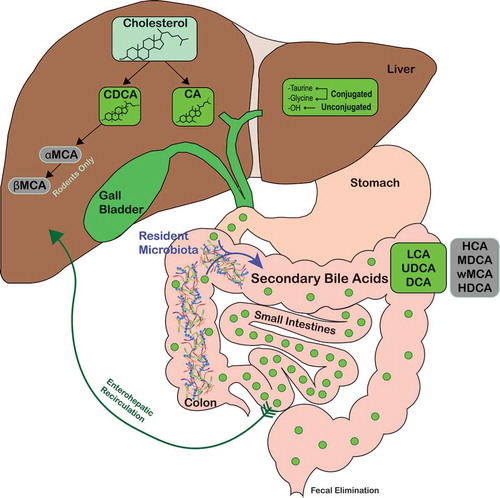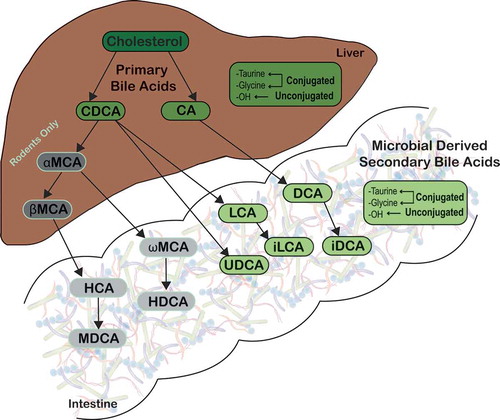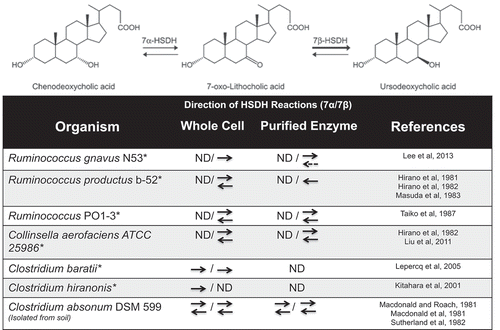Figures & data
Figure 1. Overview of bile acid metabolism and enterohepatic recirculation.
Host-derived primary bile acids are synthesized by heptocytes (CA and CDCA in humans, and CA, CDCA, αMCA, and βMCA in rodents) and conjugated with either taurine or glycine. Primary bile acids are then secreted into the bile and stored in the gallbladder until secreted in the duodenum. Resident gut microbiota biotransform primary bile acids into secondary bile acids such as LCA, UDCA, and DCA (green shaded circles) and HCA, MDCA, ωMCA, and HDCA in rodents (gray-shaded circles). Abbreviations: CA, cholate; CDCA, chenodeoxycholate; DCA, deoxycholate; HCA, hyocholate; HDCA, hyodeoxycholate; LCA, lithocholate; MDCA, murideoxycholate; UDCA, ursodeoxycholate; αMCA, α-muricholate; βMCA, β-muricholate; ωMCA, ω-muricholate.

Figure 2. Microbial metabolism of host-derived primary bile acids.
Primary bile acids are synthesized from cholesterol by hepatocytes. Primary bile acids are then biotransformed by resident bacteria in the gastrointestinal tract to secondary bile acids, such as LCA and DCA, which predominate in humans. Abbreviations: CA, cholate; CDCA, chenodeoxycholate; DCA, deoxycholate; HCA, hyocholate; HDCA, hyodeoxycholate; LCA, lithocholate; MDCA, murideoxycholate; UDCA, ursodeoxycholate; αMCA, α-muricholate; βMCA, β-muricholate; ωMCA, ω-muricholate.

Figure 3. Directions of 7α/7β-HSDH reactions form UDCA-producing bacteria.
Epimerization reaction from CDCA to UDCA, which is catalyzed by the 7α-HSDH and 7β-HSDH enzymes. ND: Not determined; *: Found in the gastrointestinal tract. Dashed line denotes weak reaction. Figure modified from Lee et al. 2013.Citation61

